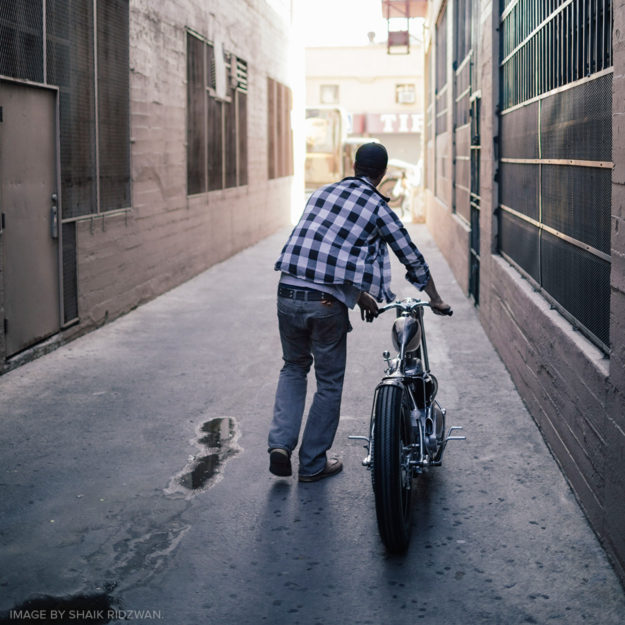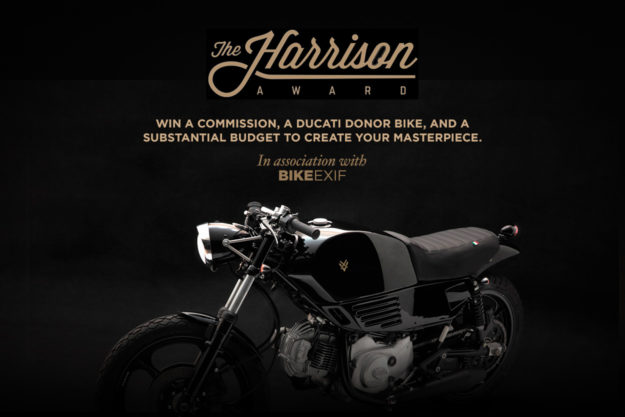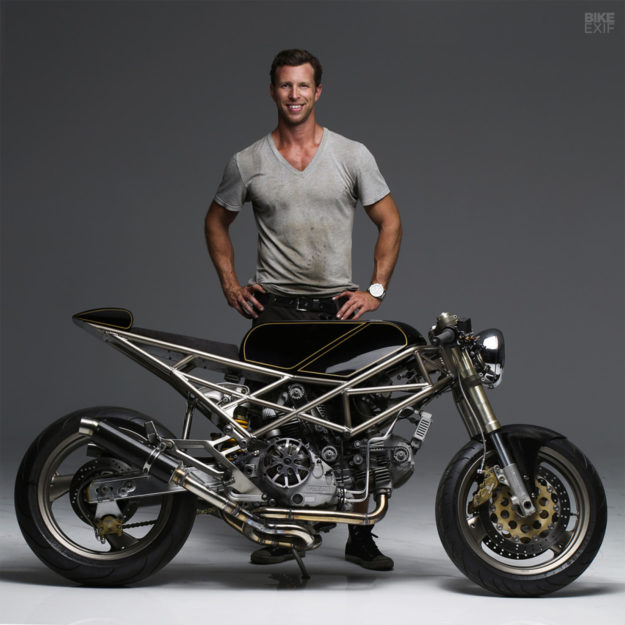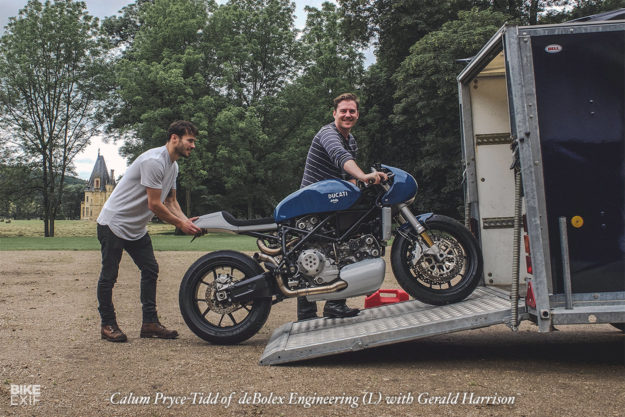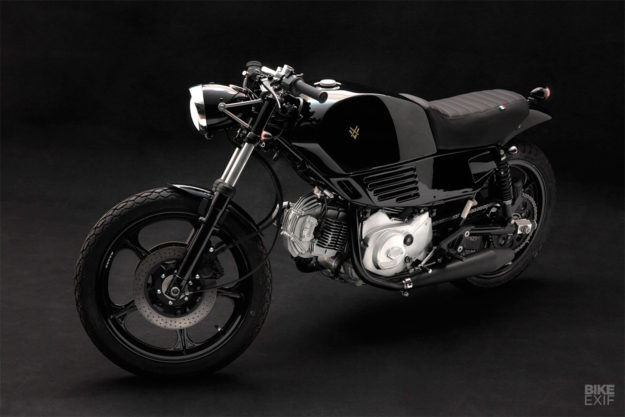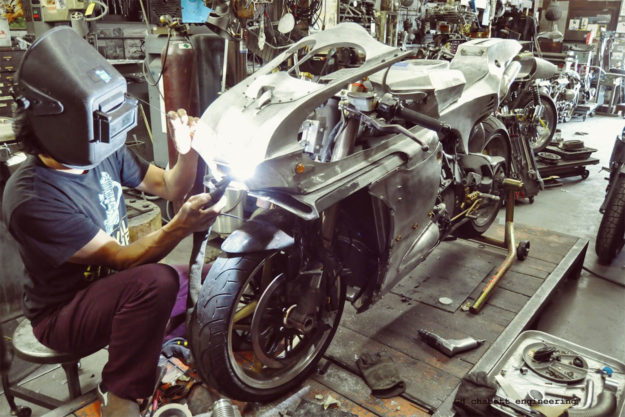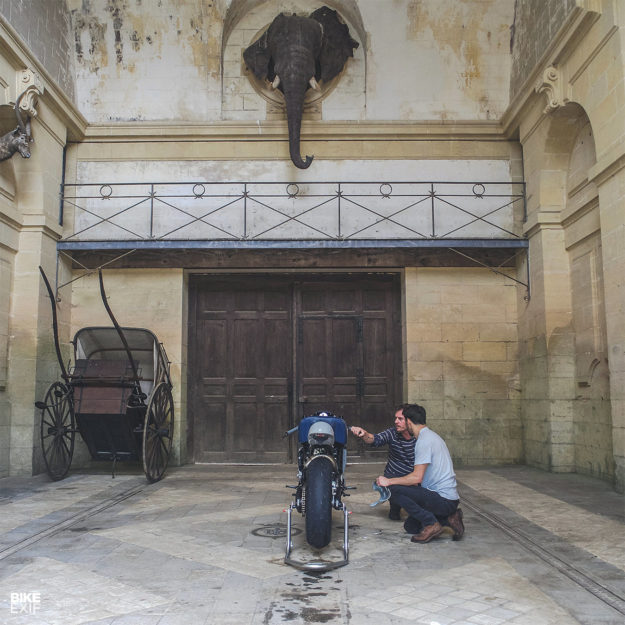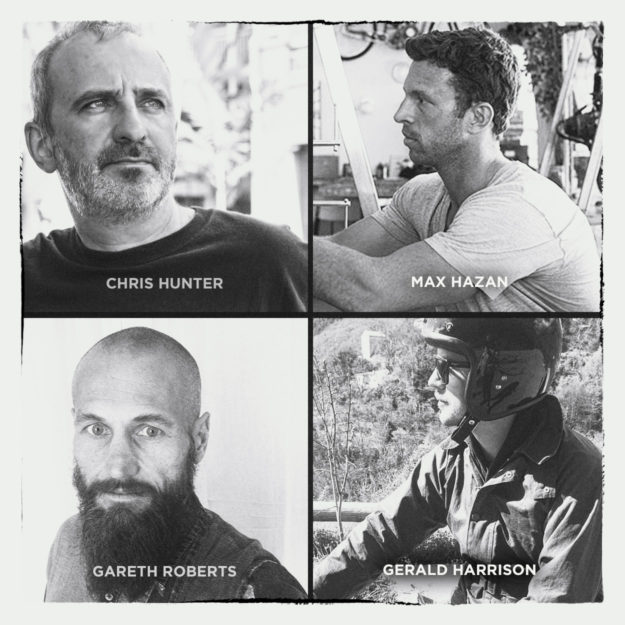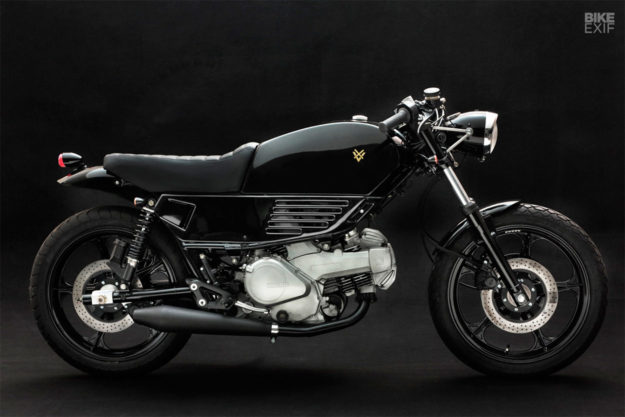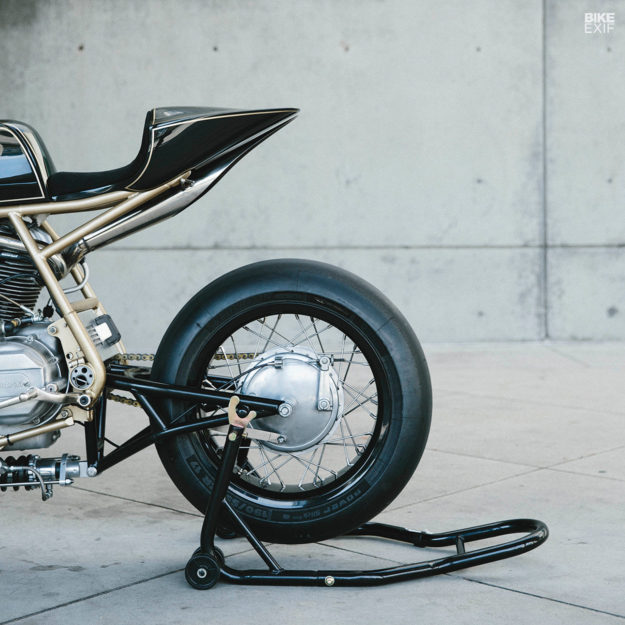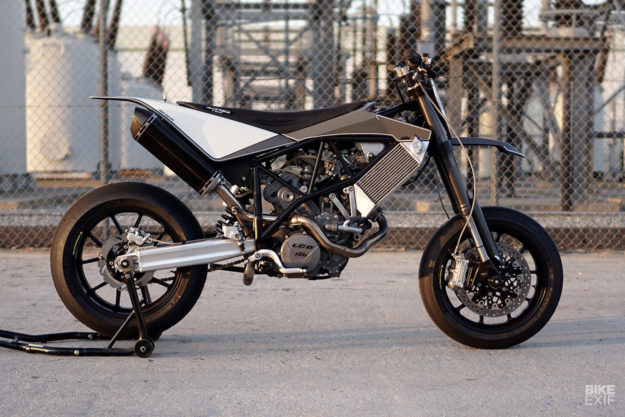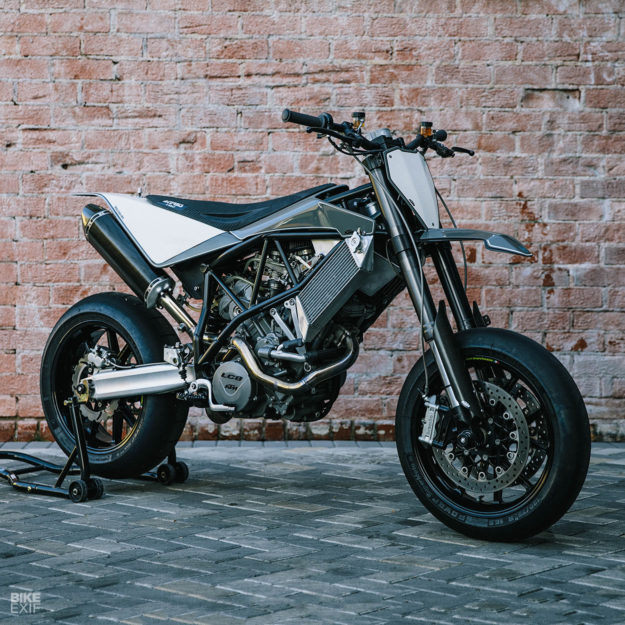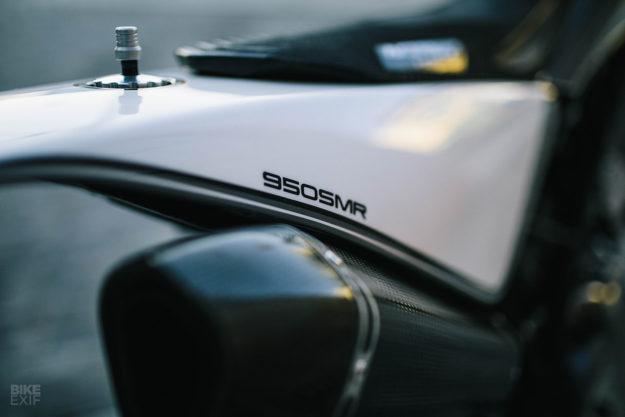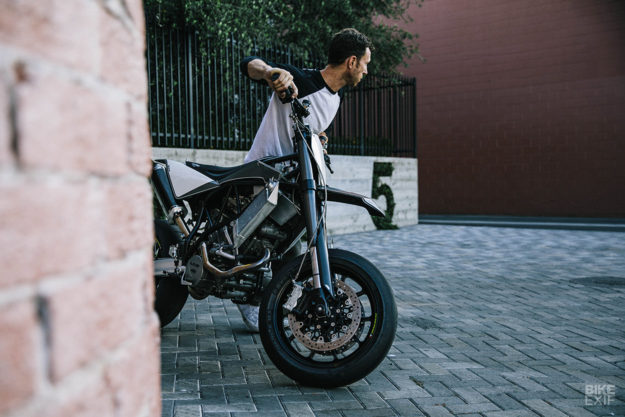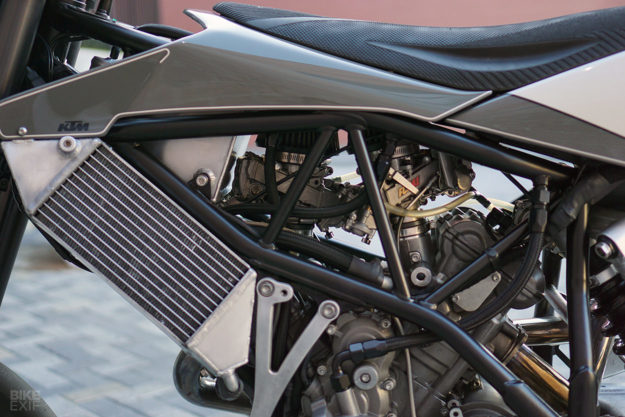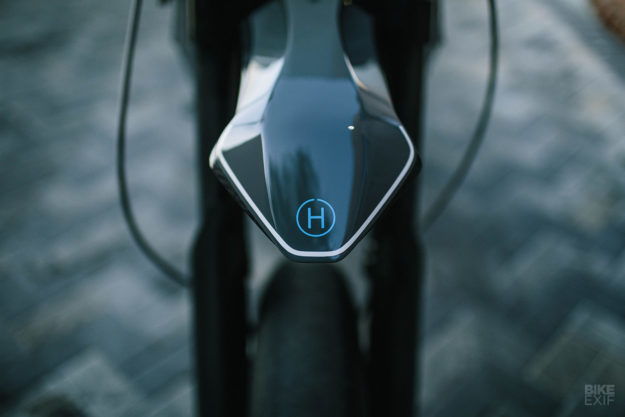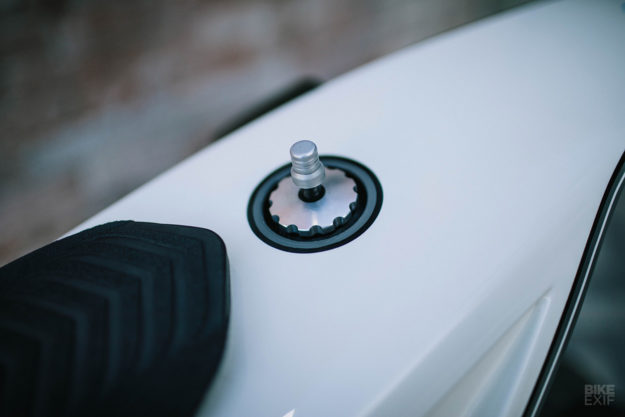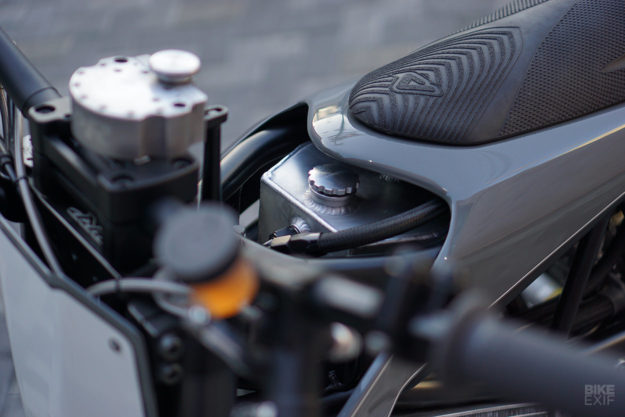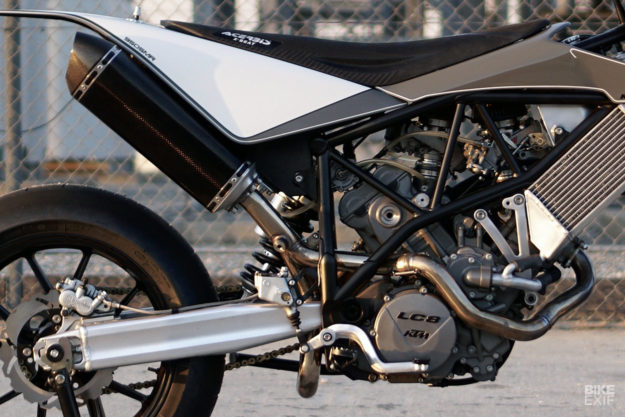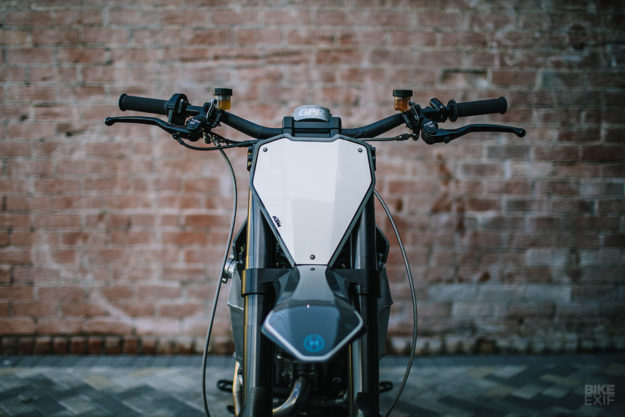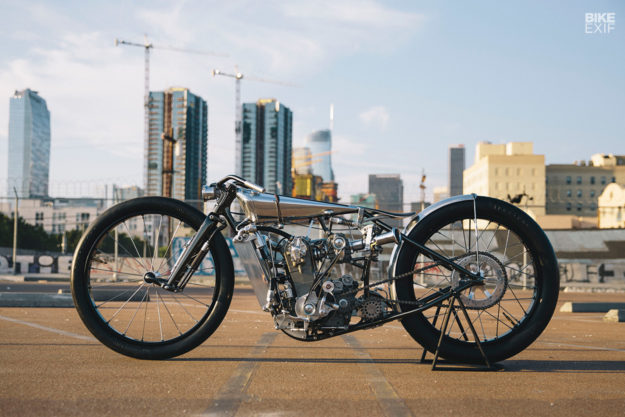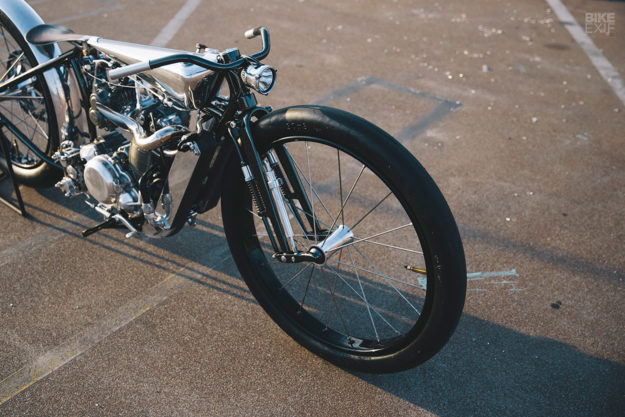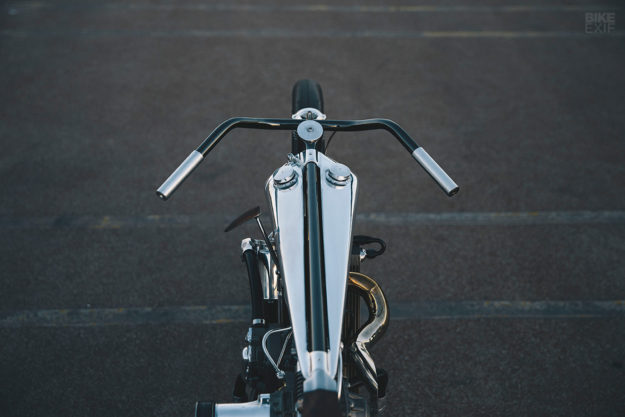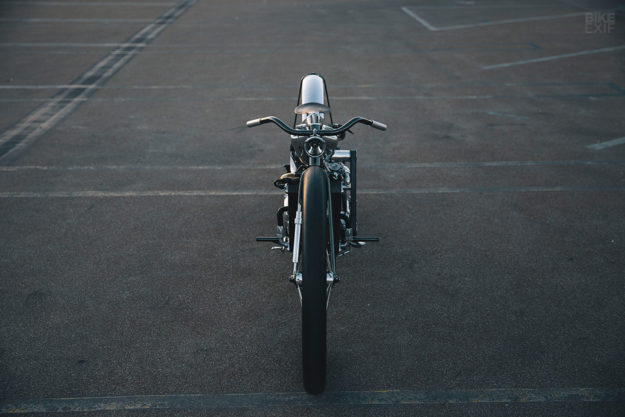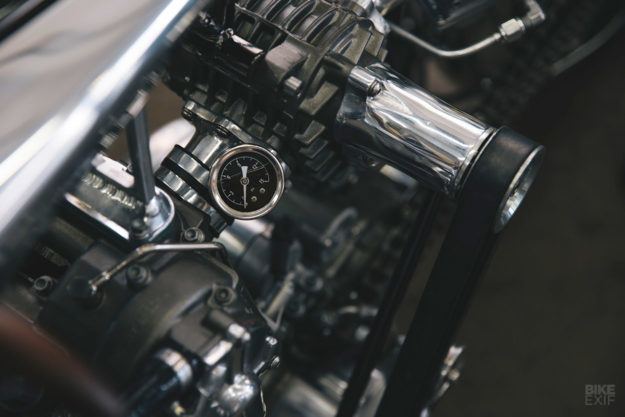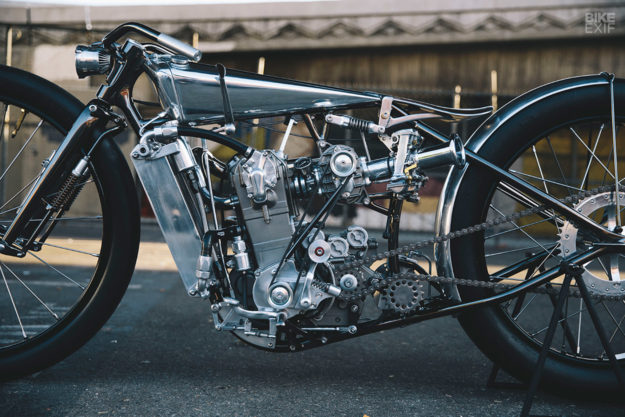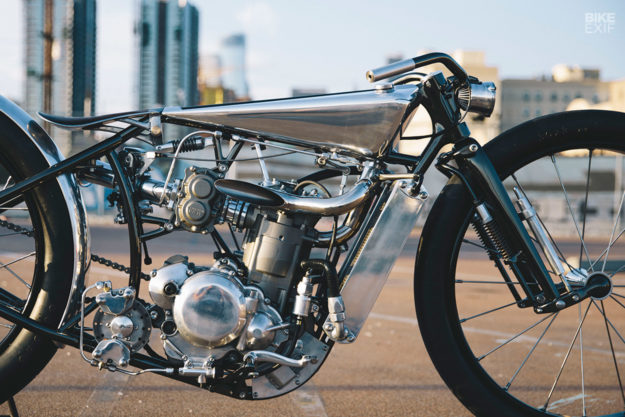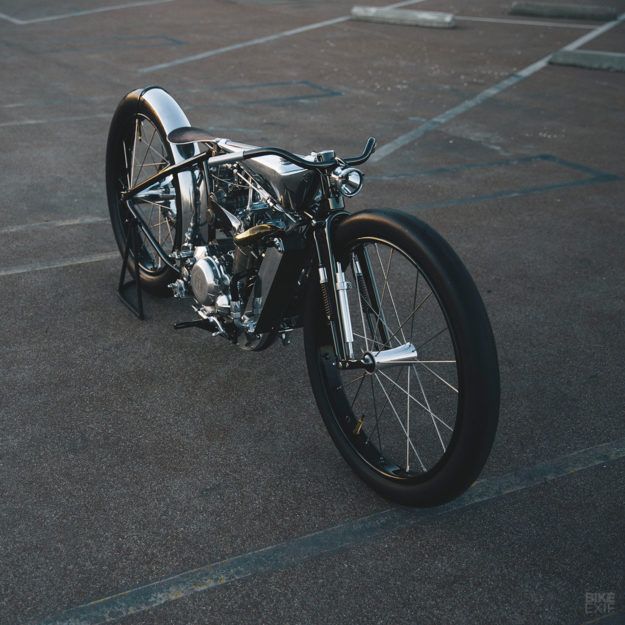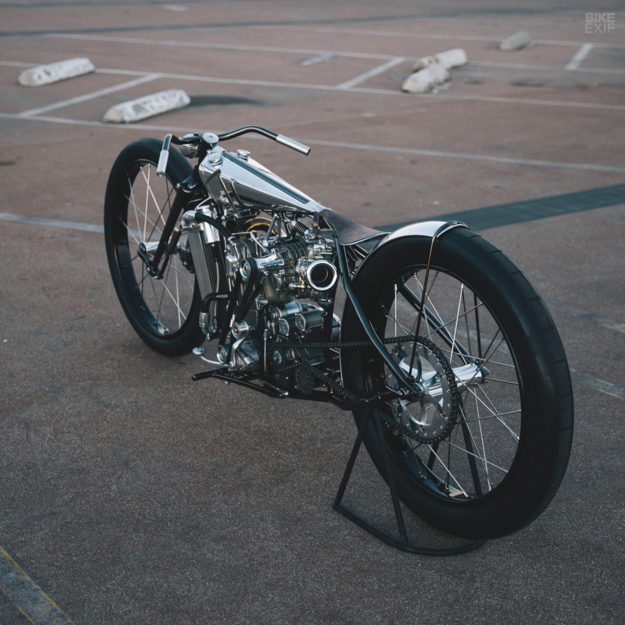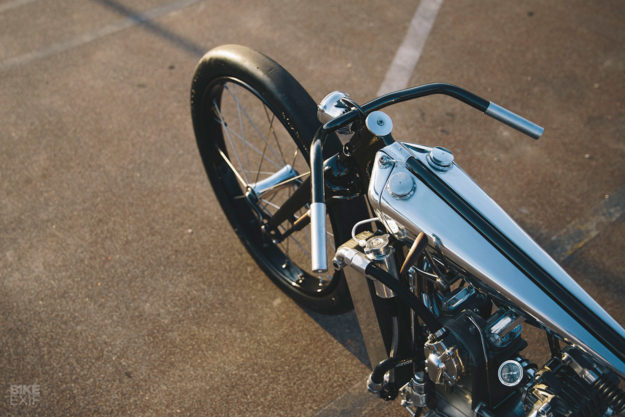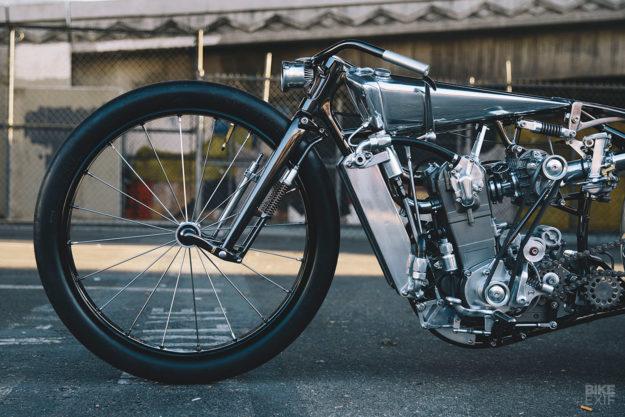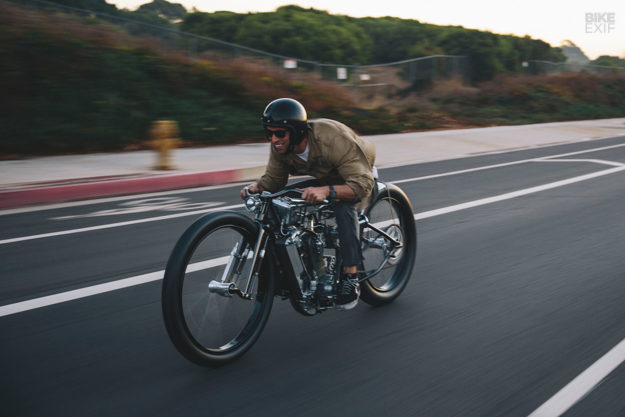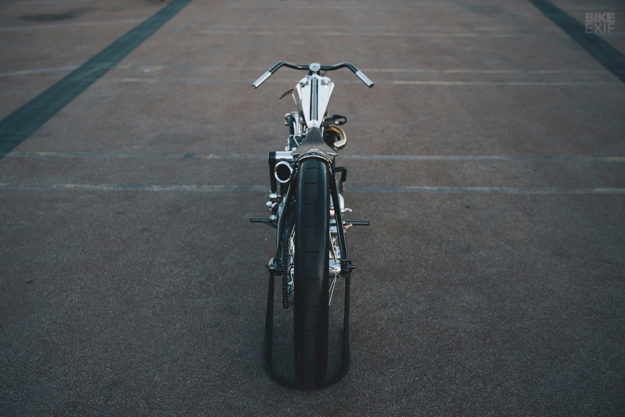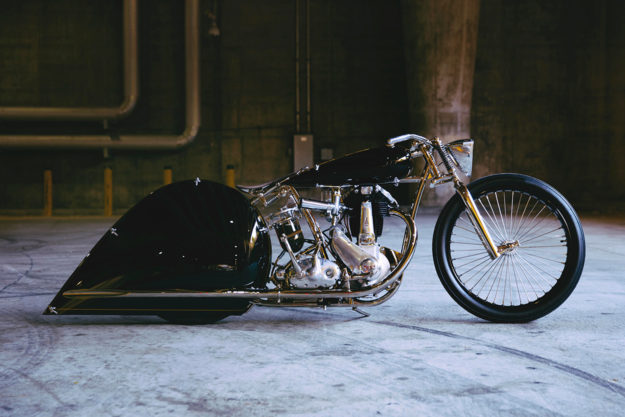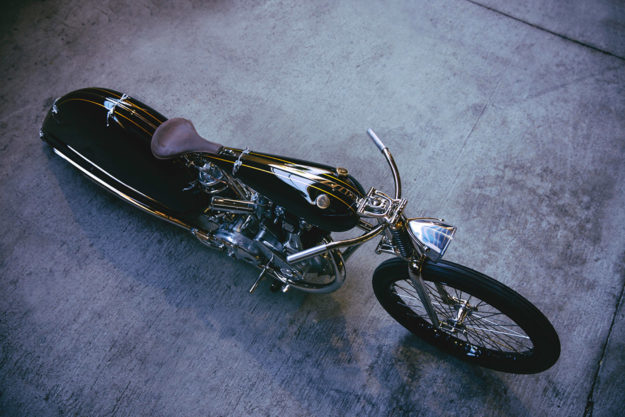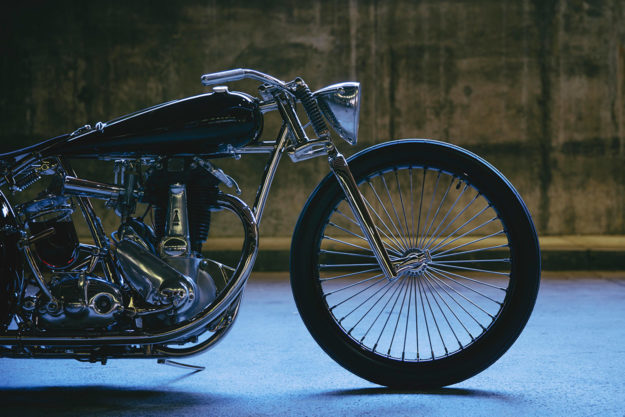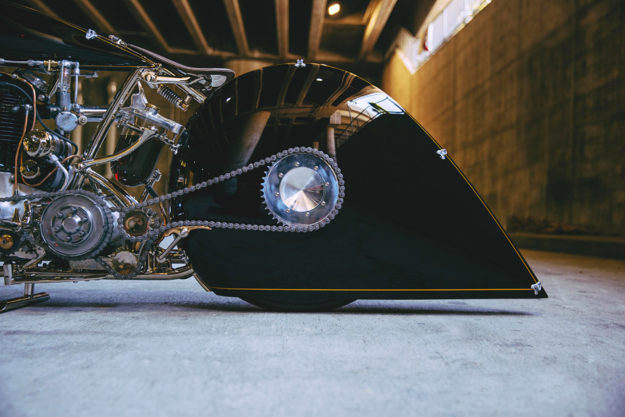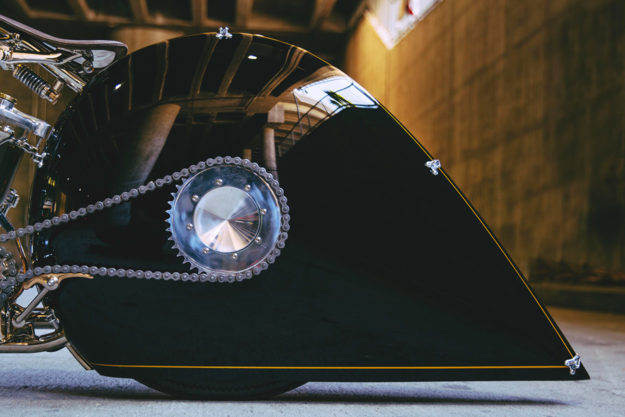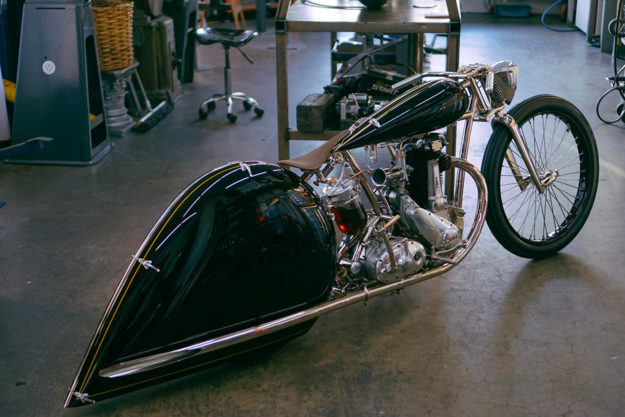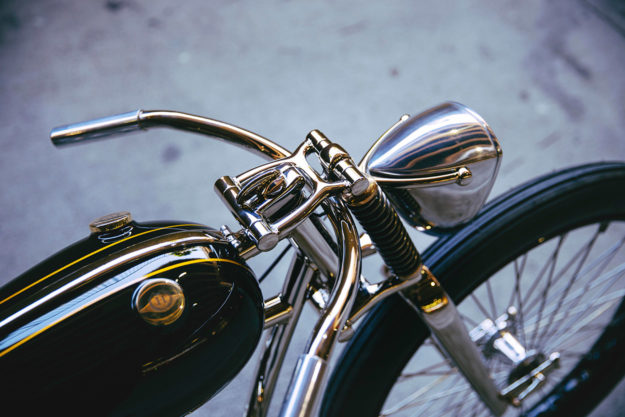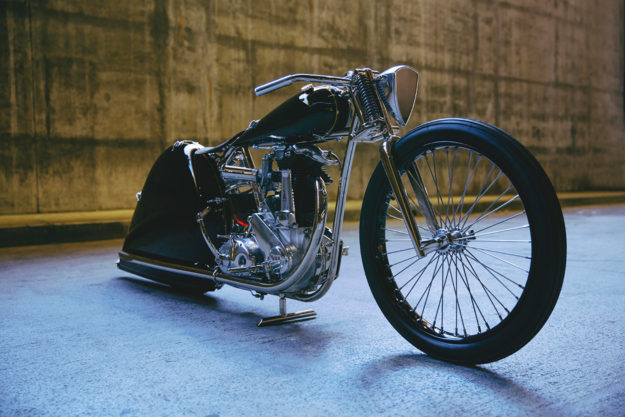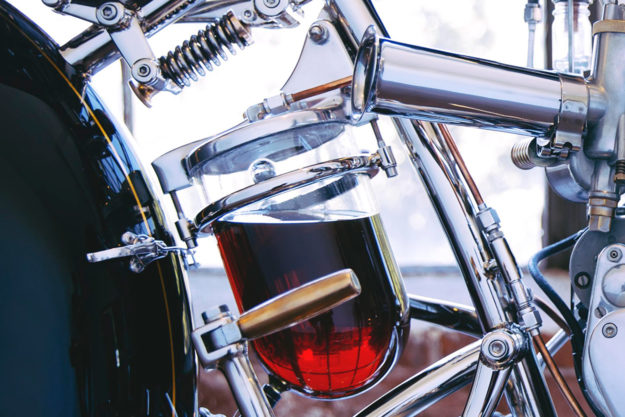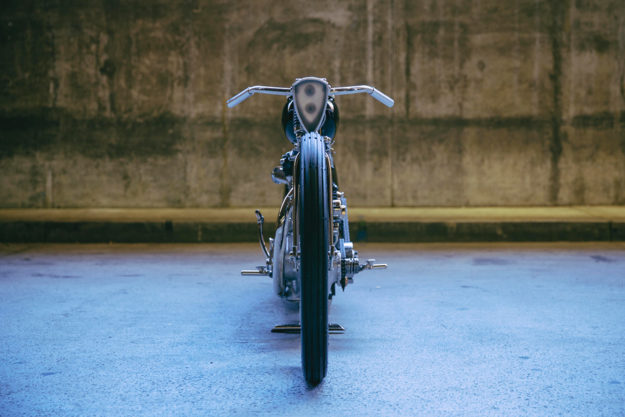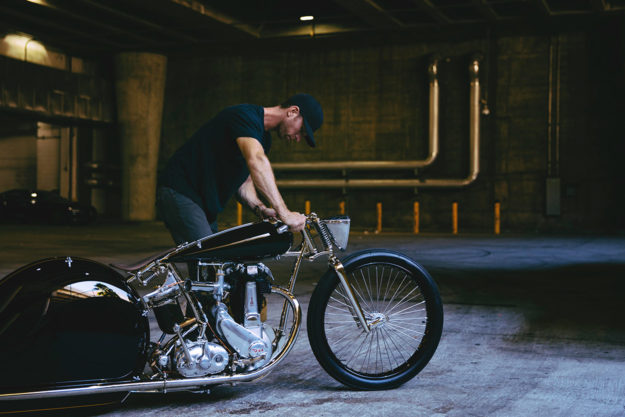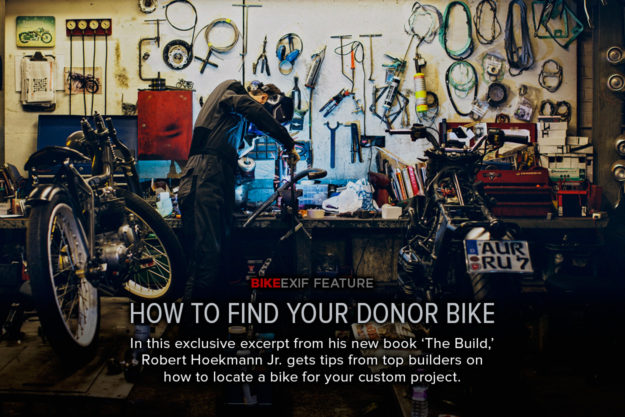
Adapted from the new book The Build: How the Masters Design Custom Motorcycles by Robert Hoekman Jr., including interviews with some of the most notable builders in the USA.
IT STARTS WITH a donor bike. Doesn’t it?
It’s a nice term, “donor bike”—all full of promise and low on price. It’s what builders call the bike they start out with, the one that will become something else after a few weeks (or months) under the shop lights.
But despite the name, donor bikes aren’t often free. Their conditions and styles and shapes all have an impact on what rolls out after the thing finally has life breathed back into it. So, really:
It starts with a search.

“Common bikes usually come from Craigslist,” says Max Hazan (above). “It’s local, so you can see the bike in person, as opposed to most eBay auctions.”
John Ryland (below) seconds the motion, but ups the effort: “More often than not, we find our donor bikes on Craigslist,” he says, describing Classified Moto’s typical procedure.
“I have about a 300-mile radius that I search and will drive to find bikes. For hard-to-find bikes or bikes I need on a tight timeline, I’ll drive farther or I’ll have the bike shipped to me. I hate to buy things sight unseen, but sometimes that’s the only way.”
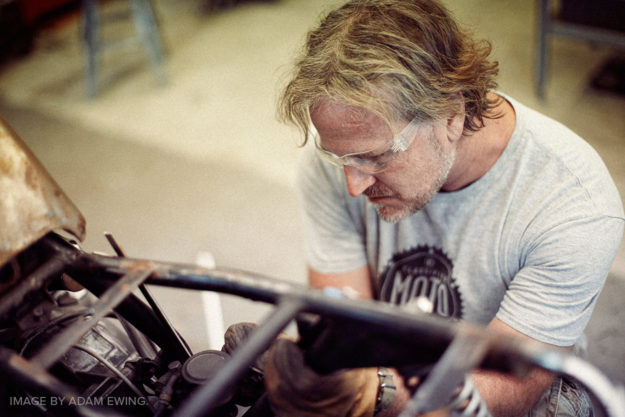
Jared Johnson (Holiday Customs) is an even more extreme Craigslist user. “If I’m on a road trip, I’ll stop in random towns and check their local Craigslist,” he says. “I’ve come back to Portland before with a truckload of bikes from San Diego, San Francisco, northern California.”
Jarrod Del Prado of DP Customs, likewise, says that while he and his brother find most of their donors in their home state of Arizona, they’ve pulled some from Nevada and California.

Revival Cycles is the exception here. Alan Stulberg points out, “Most often, our clients bring them to us. They come from all over the world, really. We rarely actively search for them.”
The lengths you’ll have to go to depend, at least in part, on how flexible you are about the particular bike you’re willing to pull into the garage. Maybe you want to shine up a sibling of that long lost love of a motorcycle you beat to hell and back during your last two years of high school.
Maybe you really like the one the guy down the street has and you have a few ideas about how to make a better one. Whatever the case, the more specific your hopes and dreams, the more difficult it may be to make the first step. A broader range of options can mean getting started sooner.
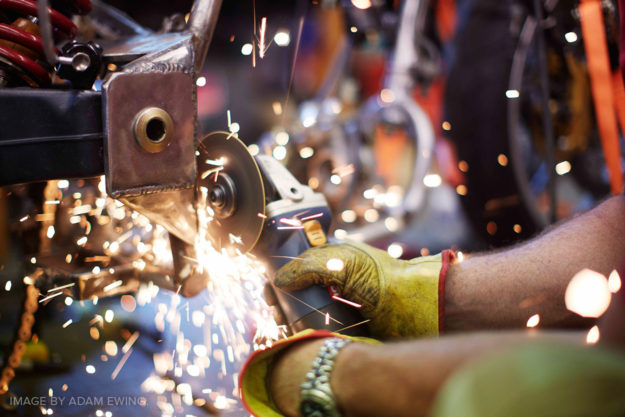
Although Classified Moto now looks mostly for specific bikes like the Honda Nighthawk 750 and the XR650L—“fairly modern bikes with plenty of new parts available”—that wasn’t always the case.
“I used to look for pretty much the cheapest bike I could find,” Ryland says, “and I didn’t care if it was exceedingly ugly or uncool. For personal projects, my goal is often to turn an ugly duckling into something interesting. I didn’t really care if it was shaft-drive or raked-out or looked more cruiser than café.
“You might consider using a single or twin for your first project. Fewer carbs can be a good thing when you’re doing your own wrenching.”
On an aesthetic side note, Ryland says he also prefers big engines: “Motor-wise, I like the look of a big four-cylinder motor stuffed into a smallish frame. While a V-twin is often thought of as a muscle power plant, it looks surprisingly skinny from the front.”
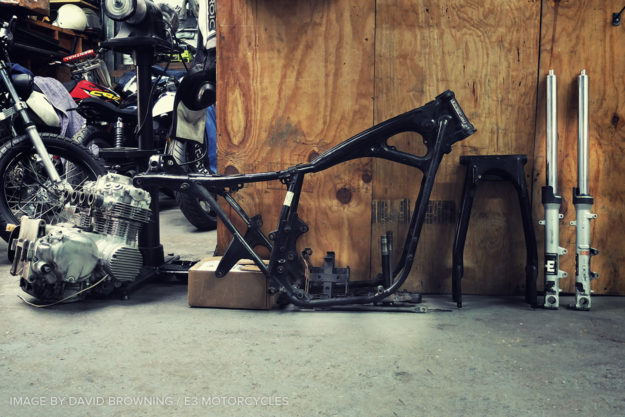
Okay, so cheap is good. But then, it’s also relative, and past a certain point, the quality starts to affect the process. Ryland continues: “We rebuild all our motors, so we’ll still buy a bike that’s blowing some smoke or down on compression a bit.
“But for the garage builder—especially for a first project—I highly recommend getting something with no major engine work required. It’s a real drag to be able to realize your aesthetic vision only to be bummed when your friends complain that you’re smoke-screening them.”
So how cheap is “okay”? Will you know it when you see it? Our builders have some hard-earned opinions.
“We’re mostly concerned with the treatment and mileage on the bike,” says Jarrod Del Prado. “It’s less about finding a great deal and more about finding a well-cared-for machine with low mileage.”
Ryland adds some detail. “Check the charging system. Make sure the engine is sound. Make sure it shifts smoothly through the gears and doesn’t pop out of gear.”
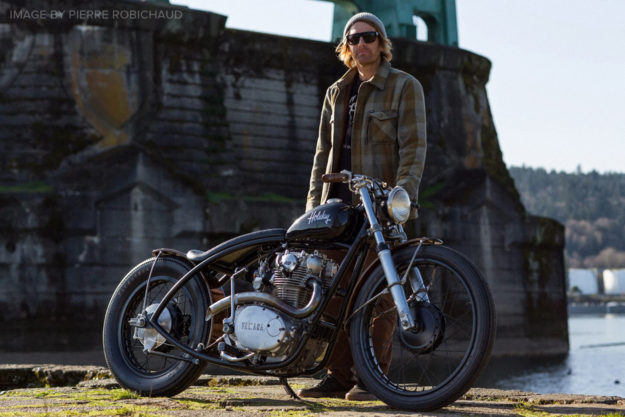
Jared Johnson isn’t so picky. “After buying random bikes through the years, I have figured out what bikes work better for the design that I have in mind. I buy bikes 400cc and up, single- or twin-cylinder. I’m not really into four-cylinder bikes.
“The engine does not have to be running or clean, just together. Rebuilding the engine takes care of all that. If the motor turns over and can roll, it’s usually okay with me. If the price seems high, I will do a compression check, check for spark, shake the wheels to check the wheel bearings. If that stuff doesn’t check out, I lowball their ass—ha ha! I usually don’t buy bikes over $1,000—so I’m usually buying bikes that have issues I take care of.”
That said, Jared does like to play favorites: “I’ve been known to buy and build XS650s and CB450s. I really like the look of the engine. Honda and Yamaha were trying to compete with the other beautiful engines at the time, like Triumph.”
A little web research uncovers some more great advice: Inspect the bike with your hands and eyes first, then your ears.
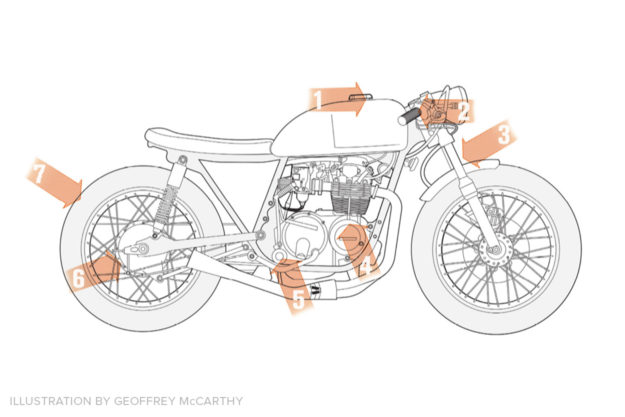
When you walk up to the bike for the first time, touch the crankcase with your bare hand. If it’s warm, walk away. A whole host of electrical and other problems can hide themselves in a bike that’s been running for a few minutes. A seller who warms up the engine before you arrive is a seller who shouldn’t be trusted.
What’s that he’s telling you? He just ran it to the corner to fill the tank? How nice of him! Walk away.
If the engine is cold, however, then dig in. Look for wear and damage to the sprocket, chain, forks, and any other moving parts you can put your hands on. Parts that need to be repaired or replaced make a donor bike cost a lot more than the asking price, even if you’re doing all the work yourself. This includes worn tires, fuel tanks with rust on the inside (this is fixable in a lot of cases, but a hassle every time), damaged wheels, and any number of other things.
Are there scratches on the crankcase? The ends of the handlebar? The foot pegs? The mirrors? Anyone who’s ever laid down a bike can tell you these are telltale signs that a bike has touched ground before. And a bike that’s been downed can have problems you can’t see from the outside.
If all is well, then you can ask for the key.
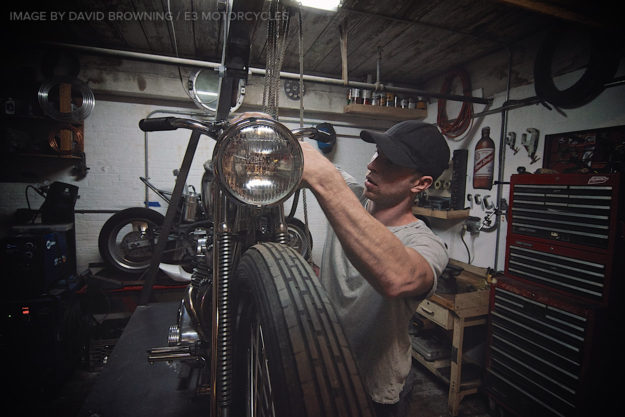
Beyond these signatures of good and bad, there are also some intangibles to consider. Namely, the person holding the key.
“The main thing that I do is evaluate the seller,” Hazan says. “I take a look at how he keeps his house, his shop, and even himself. Nine out of ten times, it’s a pretty solid indicator of how the bike was kept. There is no way to open the engine up on the spot, so if the seller’s place is a disaster, or they are a mess themselves, I usually walk away.
“I have bought dozens of bikes, and this has been pretty spot on. I have made a few bad purchases, though.”
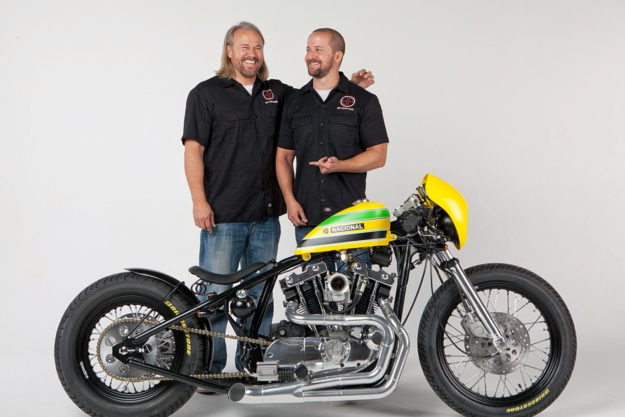
Jarrod Del Prado (above right) agrees. “When we find a bike that looks good in an ad, but then we pull up to a crappy house with an owner who clearly doesn’t maintain anything he’s got, we just keep driving. We’ve got plenty of experience buying bikes and it’s become easy for us to recognize detail-oriented folks who care for their machines properly.”
And it’s not just how the person or shop looks that matters.
Del Prado continues: “You can usually tell an honest seller from a grifter. If you feel good about what they’re telling you and you want the bike, then go with it. Don’t let a hundred bucks stand in the way of a bike that you know fits the bill.
“On the flip side, do yourself a favor and avoid bikes whose owners come across as assholes in their ads. As a general rule, if the ad has the phrase ‘Don’t waste my time’ in it, the seller is an asshole. Avoid.”
Robert Hoekman Jr is the author of The Build and a contributing editor and columnist for Iron & Air magazine. He also wrote the captions for the 2015 and 2016 Bike EXIF calendars. Pick up a copy of The Build on the Octane Press website.
Header image by Damian McFadden.
